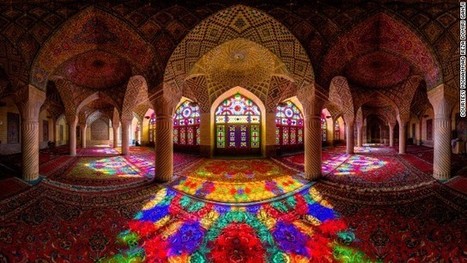"Lake Urmia in northwestern Iran was once one of the largest saltwater lakes in the Middle East, but it has diminished dramatically. Diversion of water from local rivers for agricultural use is one likely cause. Since 1996, drought has further contributed to the decline. The lake now covers about 10 percent of the area it covered in the 1970s. In the 2014 image, the entire southern portion of the salty lakebed is exposed. Also see this set of images."
Tags: Iran, remote sensing, geospatial, unit 1 Geoprinciples, land use, food, food production, environment.



 Your new post is loading...
Your new post is loading...














